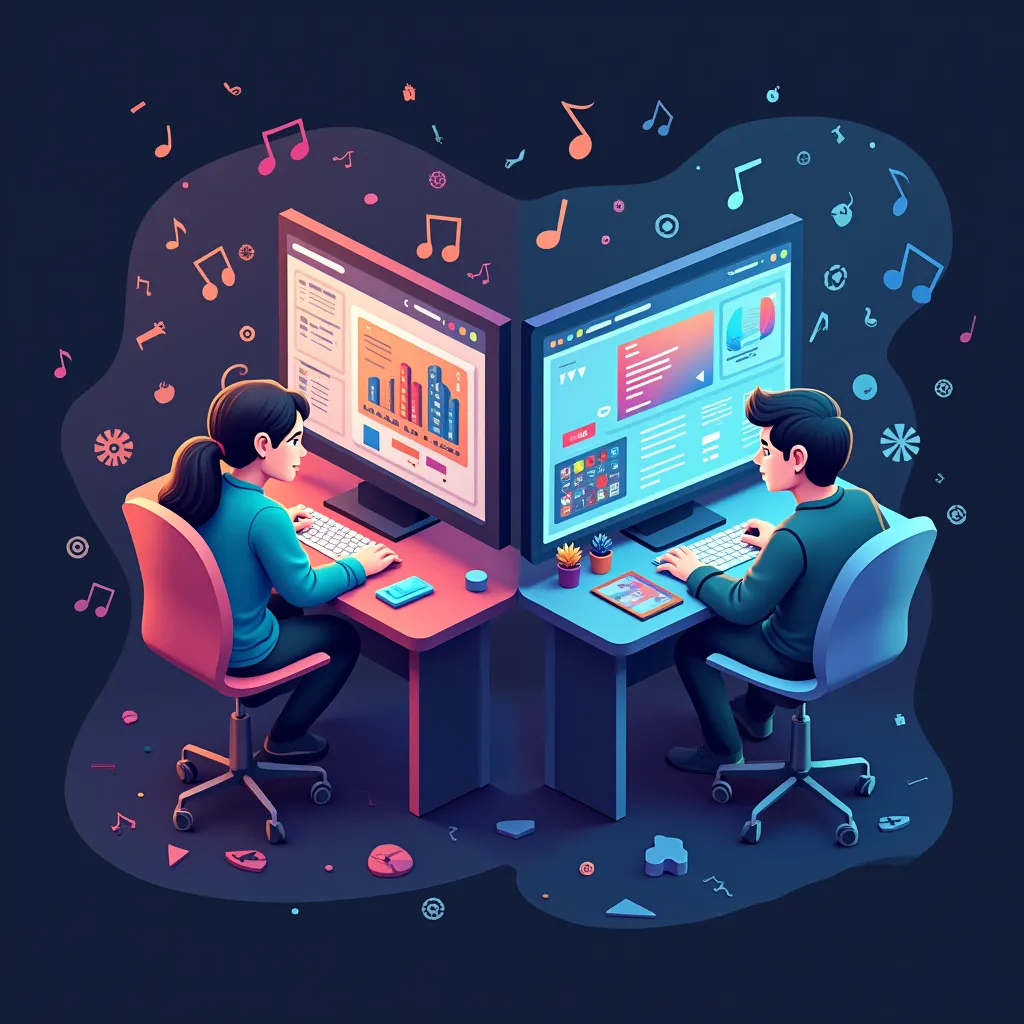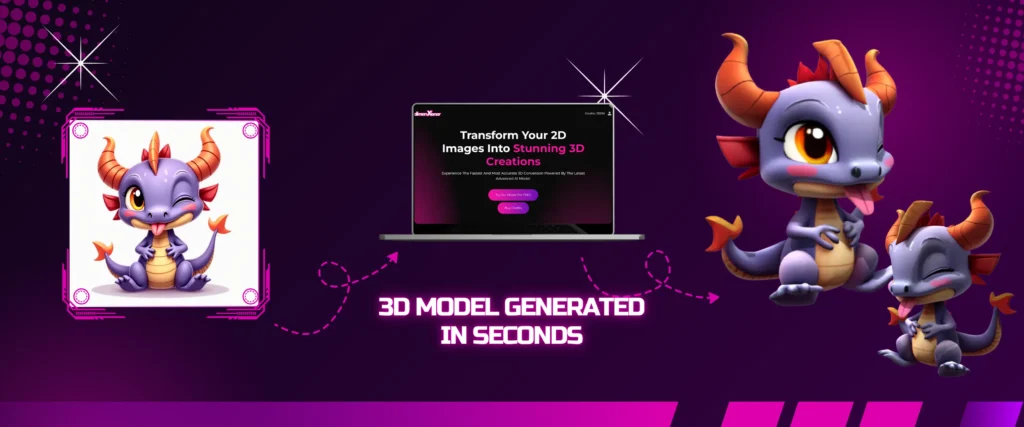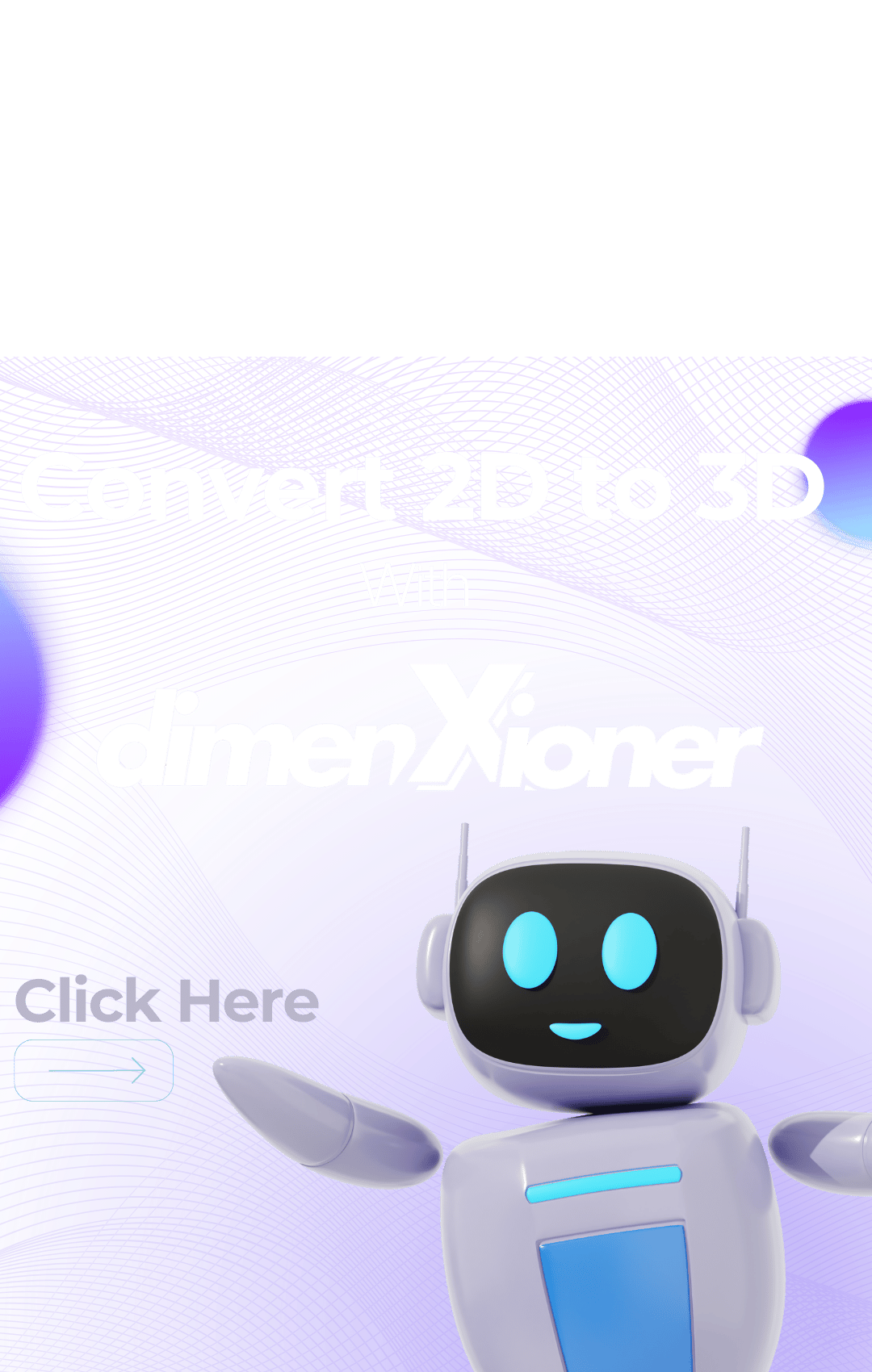Are you a beginner eager to dive into the exciting world of indie game development? With the rapid advancements in technology, creating your very own game has never been more accessible. Whether you’re passionate about storytelling, design, or programming, indie game development offers the perfect opportunity to bring your creative ideas to life—without needing a large team or a hefty budget.

In this step-by-step guide, we’ll walk you through the essentials of making your first indie game. From choosing the right game engine like Unity or Godot, to learning the basics of game programming, and even utilizing AI tools for 2D-to-3D asset creation, we’ll cover it all. Whether you want to develop a simple 2D platformer or experiment with 3D mechanics, this guide is packed with practical advice to help you get started.
The best part? With the right tools and mindset, anyone can create a game, no matter their prior experience. Let’s begin your journey toward becoming an indie game developer and making your first game a reality!
1. Choosing the Right Game Engine for Your First Indie Game
Selecting the right game engine is one of the most crucial decisions you’ll make as an indie game developer. It can significantly impact the development process, the type of game you’re creating, and your ability to bring your vision to life. With so many game engines available, it might feel overwhelming, especially if you’re just starting out. To help guide you, here’s an overview of some of the most popular game engines and key factors to consider when making your choice.
1. Why the Game Engine Matters
The game engine you choose acts as the foundation of your game. It determines how you will build your game mechanics, design your levels, and handle things like physics, graphics, and audio. A good game engine will help streamline the development process, provide resources for learning, and give you the tools to execute your ideas effectively. Choosing the wrong engine can result in frustration, unnecessary complexity, or limitations down the line, so it’s essential to pick one that suits your goals, skills, and the type of game you want to create.
2. Best Game Engines for Beginners
Unity
Unity is arguably the most popular game engine for indie Game development. It’s incredibly versatile, capable of creating both 2D and 3D games, making it suitable for a wide range of genres. One of Unity’s greatest strengths is its large and active community, which provides ample resources such as tutorials, forums, and assets for developers at any skill level. Unity uses C#, a beginner-friendly programming language that is both powerful and relatively easy to learn. The engine’s Asset Store also allows you to purchase or download free assets, which can help speed up your development process. Unity’s flexibility makes it perfect for beginners, and it also has excellent documentation to guide you through learning the ropes.
Godot
Godot is an open-source, lightweight game engine that has been gaining traction in the indie development community. Unlike Unity, which has a steep learning curve for beginners, Godot is often praised for its intuitive user interface and easy-to-understand scripting system. It uses GDScript, a Python-like language, which is generally considered easier to grasp than C# for absolute beginners. Godot supports both 2D and 3D game development but is particularly well-suited for 2D games, with features like pixel-perfect rendering and a dedicated 2D engine that doesn’t require workarounds. Plus, Godot is completely free and open-source, with no licensing fees or royalties. If you want an engine that’s quick to get started with, Godot is an excellent choice for beginners.
Unreal Engine
Unreal Engine is known for its high-quality graphics and is often used by professional developers working on AAA games. While it’s a more complex engine than Unity or Godot, Unreal Engine can still be a great option for beginners, especially if you’re focusing on 3D game development. Unreal uses C++ for coding, which may be challenging for some beginners but offers more control over game mechanics and performance. However, Unreal Engine also provides a visual scripting tool called Blueprints, which allows you to create gameplay logic without writing a single line of code. This makes it a good option for those who want to focus on designing the game rather than getting bogged down by coding. If you’re aiming to make graphically rich games or explore virtual reality (VR), Unreal Engine is one of the best choices.
3. Choosing the Best Engine for Your Project
When deciding which engine to use, consider the following factors:
- Type of Game: Are you making a 2D platformer, a top-down RPG, or a 3D action game? If you’re focusing on 2D games, Godot might be your best bet due to its dedicated 2D engine, while Unity works well for both 2D and 3D. If you’re interested in creating high-end 3D visuals, Unreal Engine might be the better choice due to its advanced graphics features.
- Skill Level: If you’re completely new to programming and game development, you might want to start with an engine that has a simpler learning curve, such as Godot or Unity. On the other hand, if you have some experience with coding and are aiming for cutting-edge visuals or complex 3D mechanics, Unreal Engine could be a better fit.
- Support and Community: Consider the size and activity level of the engine’s community. Unity and Unreal Engine have massive communities that offer support, tutorials, and free assets. Godot, while smaller, is very active and offers great documentation and tutorials, especially as the engine grows in popularity.
- Cost: Most of the top game engines have free versions with all the core features. Unity and Godot are completely free for indie developers, while Unreal Engine is free but requires a royalty on sales once your game hits a certain revenue threshold.
4. Which Engine is Right for You?
Ultimately, the choice of game engine comes down to your specific needs and preferences as a beginner game developer. If you want a well-supported, feature-rich engine and are willing to invest some time learning C#, Unity is an excellent choice. If you prefer a lightweight, user-friendly engine with a focus on 2D games, Godot could be your perfect match. For cutting-edge graphics and the ability to create powerful 3D games, Unreal Engine offers advanced capabilities with visual scripting for those who don’t want to write code immediately.
Remember, the best engine for you is the one that allows you to bring your creative vision to life with ease. Choose wisely, and get ready to start developing your very first indie game!
2. Learning the Basics: Programming, Game Design & Assets
Before you can build a fully functional game, you need to understand three fundamental areas of indie game development: programming, game design, and assets. Each of these components plays a crucial role in shaping your game’s mechanics, player experience, and overall quality. Let’s break down each area and explore how you can get started as a beginner.

1. Programming: The Backbone of Your Game
Programming is what makes a game interactive. It controls everything from character movements and game physics to AI behavior and user inputs. While coding may seem overwhelming at first, learning the basics can be more approachable than you think, especially with beginner-friendly tools and languages.
Choosing a Programming Language
Your choice of programming language depends on the game engine you use. Here are the most common ones:
- C# (Used in Unity) – A powerful yet beginner-friendly language. C# is widely used in Unity, making it an excellent choice for new developers. It offers strong community support, extensive documentation, and a vast number of tutorials.
- GDScript (Used in Godot) – A lightweight, Python-like scripting language designed specifically for Godot Engine. It is easier to learn than C# and allows for rapid prototyping.
- C++ (Used in Unreal Engine) – A more advanced language with greater control over performance, but it has a steeper learning curve. Unreal Engine also offers Blueprints, a visual scripting system that allows you to build game logic without writing code.
- Python, JavaScript, and Lua – Some engines, like Pygame (Python) or Defold (Lua), use alternative languages that are well-suited for simpler 2D games.
Where to Learn Programming
- Official Documentation – The Unity, Godot, and Unreal Engine websites provide excellent free learning materials.
- Online Courses – Platforms like Udemy, Coursera, and Codecademy offer structured game programming courses.
- YouTube Tutorials – Free video guides cover everything from beginner coding to advanced game mechanics.
- Practice with Small Projects – Start with mini-games like a simple platformer, a Pong clone, or a basic shooter to get hands-on experience.
Game Design: Creating a Fun and Engaging Experience
Game design is the blueprint that defines how your game will work, feel, and engage players. Even the best programming and graphics won’t make up for a poorly designed game.
Key Elements of Game Design
- Game Mechanics – Define how the player interacts with the game world. Will your game have platforming, puzzle-solving, or combat mechanics?
- Level Design – Shapes the player’s journey through the game. Well-designed levels create challenges and rewards that keep players engaged.
- Player Feedback and UI – The game should clearly communicate actions and outcomes through UI elements like health bars, score counters, and animations.
- Storytelling and Narrative (if applicable) – Even simple indie games can benefit from storytelling elements that enhance immersion.
Beginner-Friendly Game Design Tips
- Start with a small, manageable project to avoid overwhelming complexity.
- Play and analyze successful indie games to understand what makes them fun.
- Create a game design document (GDD) to outline mechanics, goals, and level structure before you start development.
- Get feedback early by playtesting with friends or fellow developers.
3. Assets: Graphics, Sound, and Animations
Game assets are the visual and auditory elements that bring your game to life. This includes everything from characters and environments to sound effects and background music.
Types of Assets You Need
- 2D or 3D Sprites and Models – Characters, objects, and backgrounds.
- Textures – Images applied to 3D models to add realism or artistic style.
- Animations – Character movements, UI transitions, and visual effects.
- Sound Effects and Music – Footsteps, weapon sounds, background music, and ambiance.
Where to Get Game Assets
- Create Your Own – Use tools like Aseprite (for pixel art), Blender (for 3D models), or Adobe Illustrator (for vector graphics).
- Free Asset Libraries – Websites like OpenGameArt, Kenney.nl, and itch.io offer free assets for indie developers.
- Premium Marketplaces – The Unity Asset Store, Unreal Marketplace, and Envato Elements have high-quality assets available for purchase.
- AI-Generated Assets – AI-powered tools can now generate 2D and 3D game assets, speeding up the development process significantly.
Using AI for Asset Creation in 2025

With the increasing accessibility of AI-driven tools, indie developers can now create high-quality assets with minimal effort. AI tools can:
- Convert 2D images into 3D models instantly, saving hours of manual work.
- Generate textures and procedural environments dynamically.
- Auto-rig and animate characters, making animation faster and more efficient.
Some of the best AI-powered asset creation tools include:
- DimenXioner – AI-powered tool that converts 2D images into 3D objects.
- Scenario – AI-based image generator for unique textures and game assets.
- Runway ML – AI-driven video and animation generation for game development.
Using AI tools has become almost a necessity in 2025, as they allow indie developers to save time and resources while maintaining high-quality visuals and animations.
AI Tools for Converting 2D Images to 3D Objects: A Game-Changer in 2025
In 2025, the landscape of indie game development has been significantly transformed by advancements in artificial intelligence (AI), particularly in the realm of asset creation.
One of the most groundbreaking innovations is the advent of AI tools capable of converting 2D images into 3D objects, streamlining the development process and expanding creative possibilities for developers.
The Most advanced AI model in 2D to 3D Conversion
dimenXioner stands out as a pioneer, offering state-of-the-art solutions for transforming 2D images into high-quality 3D models. Leveraging advanced AI models, dimenXioner ensures that every detail of a 2D image is meticulously reproduced in 3D, providing users with accurate and realistic models.
Key Features of dimenXioner:
Cutting-Edge AI Model: Utilizes sophisticated AI algorithms to deliver unprecedented precision in 3D conversions, ensuring fidelity to the original 2D design.
User-Friendly Interface: Designed for both professionals and beginners, the platform requires no specialized skills. Users can simply upload their images and let the AI handle the conversion process.
Instant 3D Video Preview: After uploading, users receive a dynamic 3D video preview of their object, allowing for a comprehensive 360° inspection before finalizing the model.
Flexible Credit System: New users are welcomed with complimentary credits, enabling them to explore the platform’s capabilities risk-free.
Impact on Indie Game Development
The integration of AI tools like dimenXioner into the game development workflow has democratized asset creation, allowing indie developers to:
Reduce Development Time: Quickly generate 3D assets without the need for extensive manual modeling, accelerating the development timeline.
Lower Costs: Eliminate the necessity for specialized 3D modeling software or hiring external artists, making game development more accessible.
Enhance Creativity: Focus more on game design and storytelling, as technical barriers to asset creation are minimized.
In conclusion, AI tools like dimenXioner have revolutionized the process of converting 2D images to 3D objects, serving as invaluable assets for indie game developers in 2025. By simplifying and expediting asset creation, these tools empower developers to bring their creative visions to life more efficiently and effectively.
4. Building Your First Indie Game: A Step-by-Step Process
Embarking on the journey of creating your first indie game can be both exhilarating and daunting. Breaking down the process into manageable steps can help streamline development and enhance the overall experience. Here’s a comprehensive guide to building your first game:
1. Conceptualization
Begin by formulating a clear and concise idea for your game. Consider the following aspects:
Game Genre: Decide whether your game will be a platformer, puzzle, role-playing game (RPG), etc.
Core Mechanics: Define the primary actions players will perform, such as jumping, solving puzzles, or engaging in combat.
Story and Setting: Develop a basic narrative and establish the game’s environment to provide context and immersion.
2. Planning and Documentation
Create a Game Design Document (GDD) to outline your game’s features, mechanics, storyline, and design elements. This document serves as a roadmap throughout development, ensuring consistency and clarity. Key components to include are:
- Gameplay Mechanics: Detailed descriptions of controls, rules, and systems.
- Level Design: Layouts and progression of game levels or stages.
- Art and Sound Direction: Visual style, character designs, and audio requirements.
3. Prototyping
Develop a simple prototype to test your game’s core mechanics. This phase allows you to:
- Evaluate Feasibility: Determine if your ideas are practical and enjoyable.
- Identify Challenges: Uncover potential issues early in development.
- Gather Feedback: Obtain initial impressions from playtesters to guide improvements.
4. Production
With a validated prototype, proceed to full-scale development:
- Programming: Write the code that brings your game to life, implementing mechanics, physics, and AI behaviors.
- Asset Creation: Develop or source visual and audio assets, including sprites, models, animations, sound effects, and music.
- Level Development: Design and build game levels, ensuring a balanced difficulty curve and engaging progression.
5. Testing
Conduct thorough testing to identify and rectify bugs, glitches, and gameplay issues:
- Alpha Testing: Internal testing focusing on core functionality and stability.
- Beta Testing: External testing with a broader audience to gather diverse feedback and uncover overlooked issues.
6. Polish and Optimization
Refine your game by enhancing visuals, improving performance, and ensuring a seamless user experience:
- Graphics and Audio: Enhance visual effects, animations, and sound quality.
- Performance: Optimize code and assets to ensure smooth gameplay across target platforms.
- User Interface (UI): Create intuitive menus, HUDs, and controls for ease of use.
7. Marketing and Release
Prepare for your game’s launch by building awareness and anticipation:
- Marketing Strategy: Utilize social media, press releases, and community engagement to promote your game.
- Distribution Platforms: Choose appropriate platforms (e.g., Steam, itch.io, consoles) for release.
- Post-Launch Support: Plan for updates, bug fixes, and additional content based on player feedback.
Conclusion
Indie game development for beginners is more accessible than ever. With the right game engine, foundational skills in programming and design, and powerful AI tools for asset creation, you can bring your ideas to life. The key is to start small, experiment, and keep learning.
Don’t wait for the perfect moment—start building your first game today. Join indie game dev communities, explore free tutorials, and take advantage of AI innovations to speed up your workflow. Every great developer started as a beginner, and your journey starts now!

Leave a Reply